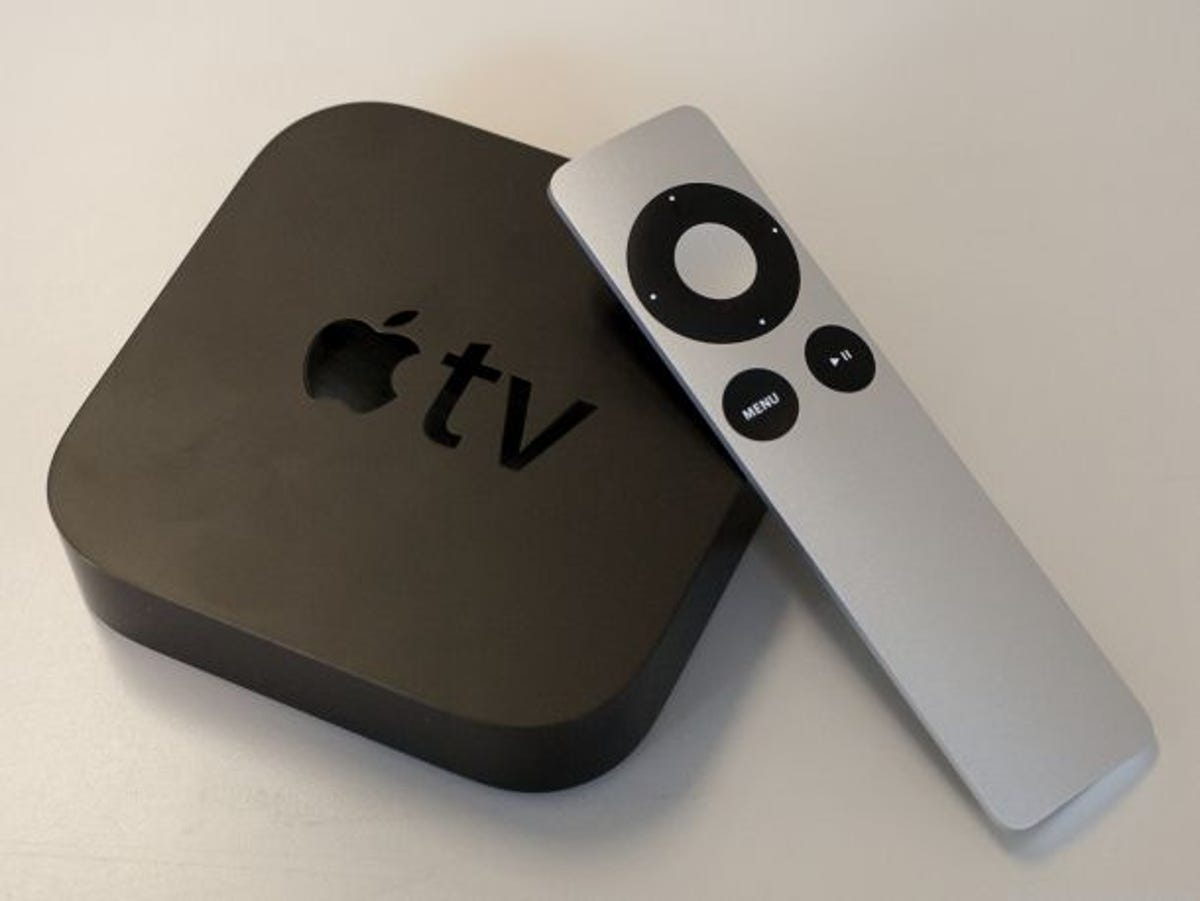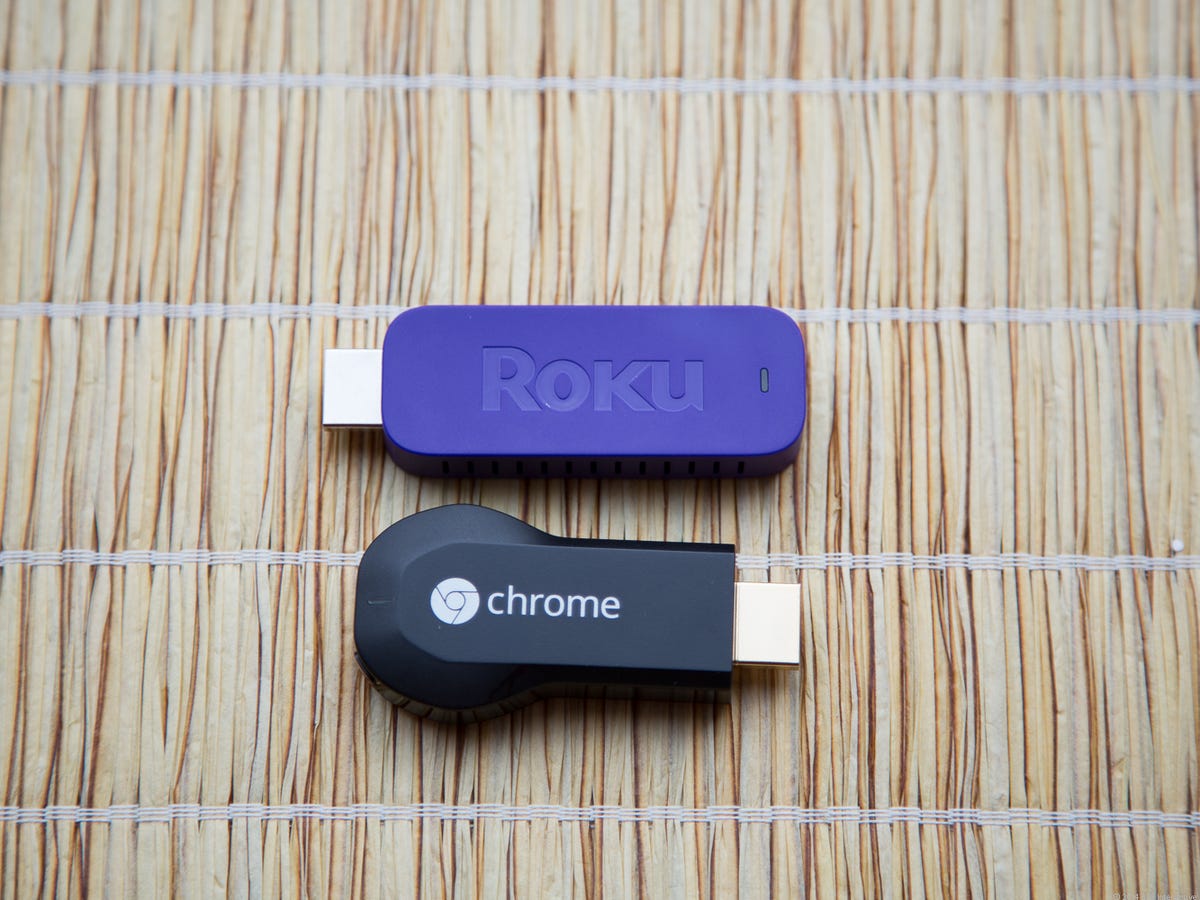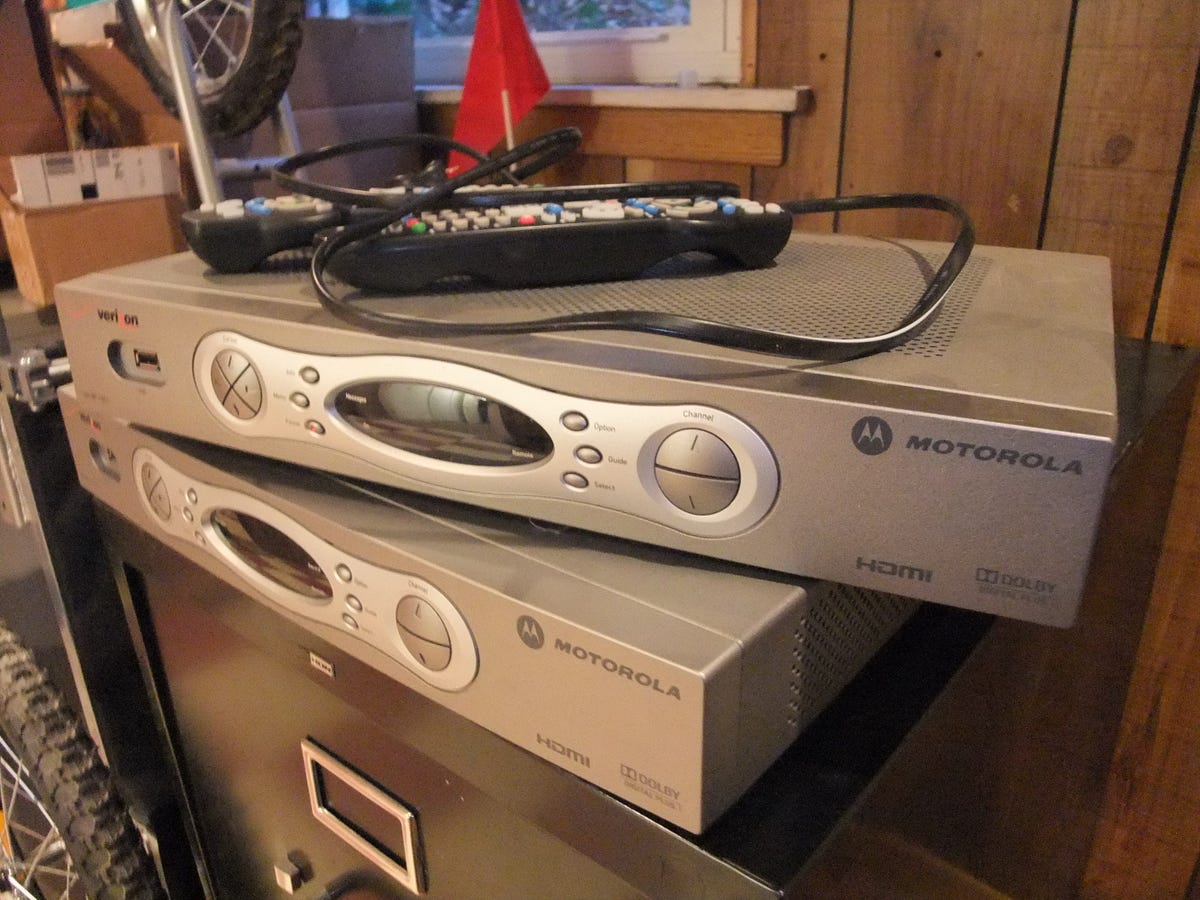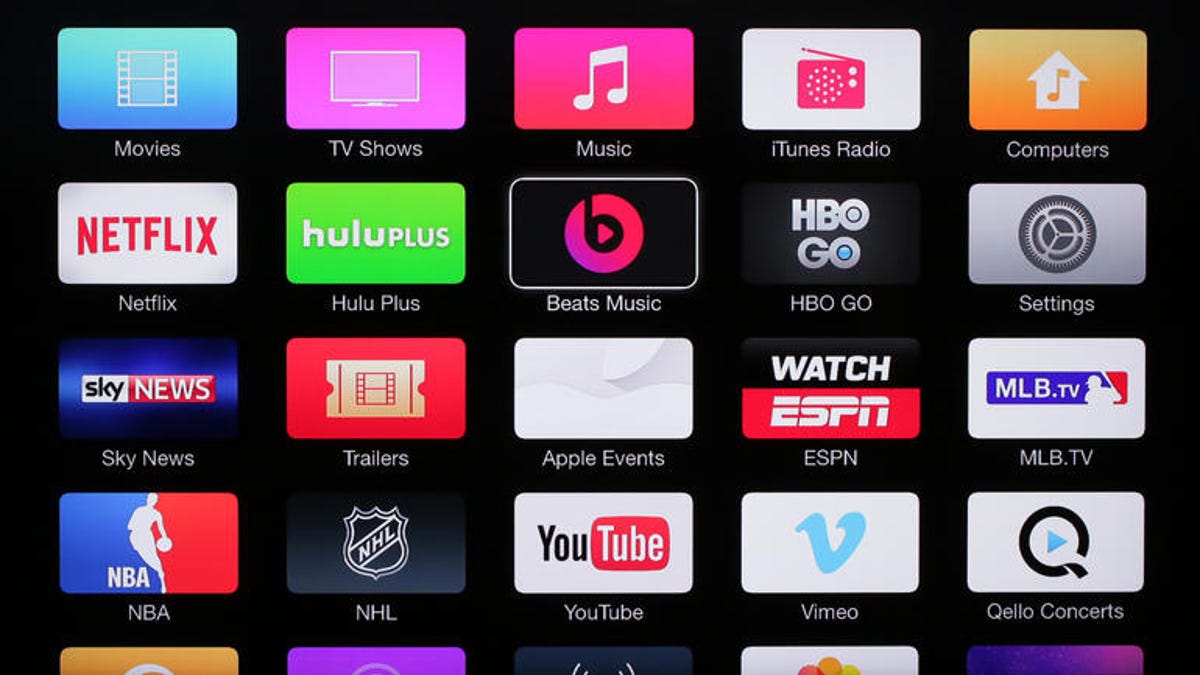
Sarah Tew/CNET
Back in March 2012, there was no Chromecast, no Amazon Fire TV , and no iPad Mini . The current iPhone was the 4S, and HBO Go was brand-new on the Xbox 360 .
Streaming video and Apple itself have both come a long way since then, but the Apple TV has not.
Sure, it added a bunch more apps, particularly in the US, including HBO Go and Watch ESPN, and most recently Beats Music, NFL Now and Fox Now. It implemented AirPlay for streaming videos and music, and it generated more than a billion dollars for Apple in 2013 alone.
But its hardware is now two-and-a-half years old. In fact, the Apple TV is powered by the same A5 chip generation that was used in the iPhone 4S and iPad 2. That’s ancient history in tech terms, especially for Apple.
Apple’s next event
- Apple sets Oct. 16 event, with new iPad, Macs likely
- Apple to offer next iPad in gold — report
- Apple unveils OS X Yosemite
- That Apple TV set: Wait till … the year after next year?
It’s time for a new Apple TV box. Its main competitor, Roku, is said to beat Apple in usage and (recently) sales. The public’s appetite for streaming video is only growing, the choice in streamers is wider than ever, and without a hardware update, Apple’s durable little puck is in danger of getting slapped out of the rink.
How will a new one be different? When will it come out? What features will Apple need to add, which ones will it skip and how badly will you want to buy one? Here are some educated guesses.
Sticking with the box


Lori Grunin/CNET
First off, what will the next Apple TV look like?
Though rumors of Apple producing an actual big-screen TV have been generating clicks for years, the current wisdom says Apple will first release another add-on device of some sort, not a full-fledged TV.
But does it need to be a box? Devices like the Roku Streaming Stick and Chromecast reduce the streaming device to its bare essentials: something the size of a USB thumb drive, but with an HDMI plug. On one hand you could argue that such miniaturization and simplicity — HDMI built-in, power supplied via USB or MHL but otherwise totally wireless — seems right up Apple’s alley.
On the other hand, the tiny size of the stick limits its hardware capabilities. You can’t include Ethernet or optical digital audio for example, two valuable extras found on the current Apple TV. And the new Apple TV will supposedly incorporate plenty of new features (see below), making the more capacious “box” form factor — possibly even something larger than the current version — more likely.
Will it replace your cable box?
At one point, it looked like Apple might be trying to do the same sort of end-run on cable and satellite companies that it did with the music business, creating an “over-the-top” solution to subscription TV. But those same cable companies have been more adept at defending their turf. (I should note for UK and Australian readers that much of the following section is US-focused; as it’s Apple’s biggest market, it necessarily shapes its strategy.)
For starters, their business partners — the programmers and TV networks that provide all the content — have no desire to rock the boat on what continues to be an incredibly profitable enterprise. (It’s worth noting here that CNET is owned by CBS, one of the biggest content providers in question.) And it doesn’t hurt that US cable companies also happen to double as the country’s biggest Internet service providers, giving them enormous leverage over the bandwidth-heavy video content that streams over their pipes — one of the issues at the core of the network neutrality debate.
Indeed, the sort of bold, cord-cutting visions of a la carte channel subscriptions that once dominated Apple’s plans for the TV space appear to have been scaled back. Already, many of the most desirable apps on the current Apple TV for US users — HBO, Showtime, ESPN, ABC, Fox Now, and so on — require those users to “authenticate” with their existing cable or satellite account. It points to more of an “if you can’t beat ’em, join ’em” approach from Apple.


David Katzmaier/CNET
But that precludes the possibility of the next Apple TV replacing your cable box. In addition to its huge on-demand slate, the current Apple TV already delivers US users live TV streams from Showtime, ESPN, ABC, CNBC, Bloomberg TV, Sky News, and most of the major US sports leagues. Throw in a few more channels and a program guide, and you might not be returning to that old cable box anytime soon.
In fact, Roku already offers that very solution for Time Warner Cable customers: a single app that delivers to subscribers all of their live TV channels and on-demand content. (The same app exists on iPads and iPhones, too, so the leap to Apple TV seems to be a problem that’s more about money than technology.) Microsoft’s Xbox platform also offers apps for Comcast and Fios, too. For its part, Apple may already have a similar deal with Comcast, the nation’s largest cable provider.
But the negotiations haven’t been easy, said Apple’s Eddy Cue himself earlier this year. “TV is a hard problem to solve,” Cue said. “One of the problems you have with a TV is you have a disparate system with a bunch of providers. There’s no standards. There’s a lot of rights issues.”
How difficult? A July 30 report, claiming the box’s launch has been delayed until 2015, says, “Apple employees have cited cable companies ‘dragging their heels’ and the pending Comcast-Time Warner Cable merger as reasons the device and accompanying TV service haven’t launched.”


Dan Ackerman/CNET
Apple gets gaming
As Amazon’s Fire TV demonstrated, games are much easier to add to a streaming box than live TV. Apple is already one of the most important gaming companies in the world, with companies like EA receiving more revenue from Apple iOS’s platform than anywhere else. That puts the Apple TV in a great position to take the idea of the microconsole mainstream, building on the idea of early entrants such as Ouya and Sony’s upcoming PlayStation TV .
A bunch of iOS-ready game controllers are already available, allowing better control of iPad and iPhone games. The introduction of the “Metal” graphics system in iOS 8 is aimed squarely at gaming. Synergy between mobile and the TV box is something Apple does very well, and the appeal of completing your Candy Crush Saga levels on the big screen is (probably?) tough to deny.
More apps, and a real app store
It’s easy to say that the next Apple TV needs more apps, but we’ll say it anyway. Roku still trounces Apple in total number of apps available, and the openness of Chromecast means it’s particularly easy to develop for, with new Android apps adding Chromecast capability all the time.
As mentioned above, many Apple TV apps already offer live TV streaming, and apps from the cable providers could amp those offerings up even further. And while we’re at it, is native Amazon Instant and Pandora too much to ask?


Sarah Tew/CNET
To that end, the new Apple TV could go the iPhone route and offer a full-blown app store, with not only numerous games but also dedicated apps designed for the big screen, giving more developers access to the growing living-room platform rather than the more conservative approach of the current Apple TV.
An interface worthy of Apple
Whether it’s the staid grid of app tiles on the home screen or the Coverflow-style navigation still found on some of the apps, the look and feel of the Apple TV interface has been largely the same since 2010. It’s certainly not bad, but it’s beginning to feel like the most dated of all of Apple’s menu systems. And the recent
doesn’t help much.
It’s not hard to imagine Apple bringing some of the “Deference, Clarity and Depth” credo from iOS to a future version of the Apple TV UI. The company has already done that with its upcoming Yosemite overhaul for Mac OS X, and the results look to be a welcome breath of fresh air (no pun intended). Doing the same for the new Apple TV could make the largest Apple screen in the house the prettiest one, too.
A better (touchscreen) remote


US Patent and Trademark Office
And while we’re asking for a new interface, how about a new remote too? That little silver wand has simplicity going for it, but we’d prefer a couple more buttons. “Back,” at least? And please Apple, make the new clicker Bluetooth so it doesn’t need line-of-sight. Motion control and a mic for Siri search would be nice, too. Heck, just copy Samsung.
And the Remote app could use updating too. The current one lets you navigate Apple TV with gestures, and adds a virtual keyboard but otherwise recreates the physical remote.
Apple seems to agree on that front. It recently filed a patent application for a new kind of app-based remote for Apple TV that uses icons and pictures, similar to those graphic interfaces on TV, but shrunken down and customized for a smartphone or tablet.
The concepts in the patent application go further than that. Instead, the new interface appears to be much more complex, with more graphics and features.
‘Siri, I want better search’


Being able to search for a single movie, show or actor across apps (and/or live TV) is a great feature. Not only can you find what you want quickly, but you can potentially save money by not ordering something you’d get “for free” already on Netflix or Amazon Instant, for example.
Roku delivers the best cross-platform search available today, with a single window that hits Netflix, Hulu Plus, Amazon Instant, HBO Go, Vudu, Crackle, M-Go, Blockbuster On Demand and even the aforementioned Time Warner Cable app. But you have to type into that window using an on-screen keyboard.
Voice search is much easier. Fire TV’s search works by letting you speak into the remote, and it’s accurate enough that you might actually use it.
That’s why long-rumored Apple TV voice search, powered by Siri, just makes sense. With a much narrower list of potential search targets compared with Siri on a phone, and Apple’s expertise in the area, Siri cross-platform search on Apple TV could deliver unparalleled accuracy and ease. Let’s just hope it works across all services, not just iTunes.
Sounds great. When can I buy it?
Don’t reach for your wallet yet, buckaroo.
Apple’s upcoming October 16 event is likely to include iPads, new Mac computers and plenty of talk about Yosemite, the latest Mac OS, so it seems too crowded for an Apple TV update. But that’s a less-crowded agenda than the recent September event, and if the October 16 invite tagline ” It’s been way too long” applies to any Apple product, it’s the Apple TV. And one analyst’s 2014 product roadmap mentions an “Apple TV upgrade” around October.
Then again, there’s that “wait till 2015” report we cited earlier. And rumors of a new Apple TV box (stick? TV? cloud service?) have come and gone so many times with nothing happening, that it’s tough to raise expectations yet again, only to have them dashed.
That said, the only safe bet is that a new Apple TV has to appear at some point. It’s a question of when, not if.




